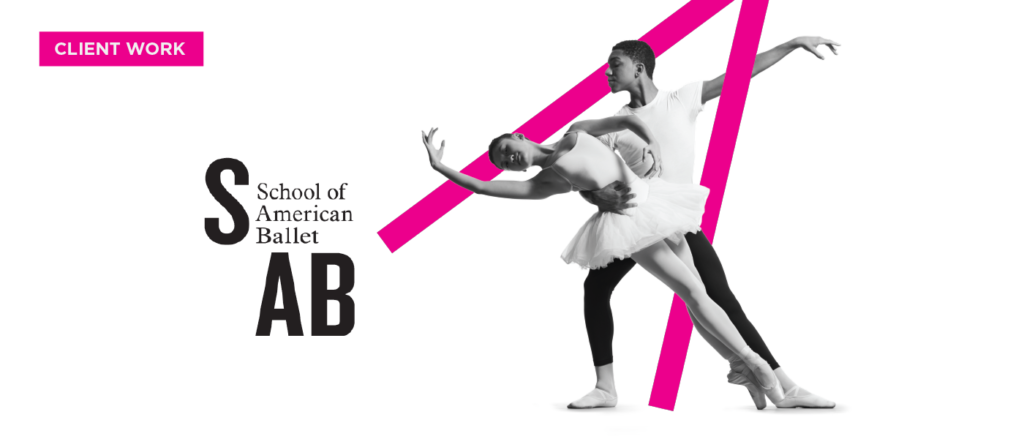A Visual Identity That Shows Ballet Dancers As the Badasses They Really Are
How our work for the School of American Ballet’s just-launched capital campaign will help usher in the next generation of dancers and patrons

Rethinking a visual identity, especially one with the rich history of the School of American Ballet (SAB), is never simple. But in some cases, it requires another element, too: thinking about how the new identity will live within an upcoming campaign.
This was our challenge over the past year, as SAB—the official school of the New York City Ballet—approached us to create a powerful new identity…and bring it to life with a crucial, year-long capital campaign, SAB in Motion, which set out to raise $20 million to support facility renovations and a Diversity Initiative.
In creating the identity and bringing it to life, we followed a 3-step roadmap:
1. Remember that not all touch points are created equally.
Controlling every possible moment that you interact with a customer (or donor) is impossible. Therefore, identifying the most relevant and critical touch points across the donation experience is imperative. Asking key strategic questions will guide which touch points can be leveraged to elevate your brand experience:
- What channels will your audiences already be on? What formats and content are they already interacting with?
- Which moments have the most potential of leading people to take action?
- How do each of these moments relate to one another so that together they create a seamless experience?
SAB wanted a case statement that could be mailed or handed out at events, as well as some digital components to the campaign. Answering the above questions, we were able to think through the user experience to see which digital interactions would be compelling when telling the SAB in Motion story.
We centered the online donation experience around a campaign landing page that highlighted the purpose of the campaign and reasons to donate. We then choreographed the best way to drive traffic to the landing page and created the relevant communications, such as a high level social strategy and emails. We also planned for the subsequent steps a user would take after exploring the landing page and deciding to donate to keep them engaged.
2. Know thy audience.
Keeping in mind who you are targeting should be at the forefront of any brand engagement. A beautiful visual identity isn’t enough – it has to reach the right people the right way to effectively achieve its strategic goal. For us, that meant understanding how we could target people who were geographically and financially diverse. We utilized different formats and tweaked content to speak to various audiences. For SAB alumni, that meant invoking nostalgia so they would connect emotionally and hopefully be motivated to donate. For parents and grandparents, that meant explaining how their donation could benefit their child or children.
3. A good story happens to those who tell it well.
Creating a story that people are excited by and want to share was crucial to the success of SAB in Motion. Rather than blandly asking for donations with a few reasons to believe, we personalized the student journey at SAB within four areas: recruit, train, nurture, and launch. Each area represents a milestone of the SAB student journey. We profiled 5 dancers of different ages and levels to help individualize this journey.
With a photoshoot and interviews, we were able to capture and showcase the SAB student journey with this campaign. We also provided a social strategy that invited alumni and students to participate in the campaign by submitting their own personal SAB stories and pictures. With this participation, the SAB student journey could continue to be individualized beyond the 5 dancers we profiled.
Whether marketers are looking to bring a visual identity to life for a campaign, or rolling out a new visual identity to replace an old one, the starting place is the same: identifying relevant communications, crafting a good story for people to rally behind, and prioritizing and adapting for key audiences.


